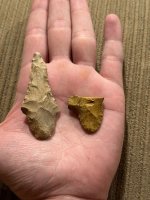UncleMatt
Bronze Member
- Jul 14, 2012
- 2,389
- 2,530
- Detector(s) used
- Garrett Infinium & Gold Bug II, Bazooka Super Prospector Sluice
- Primary Interest:
- All Treasure Hunting
Hey All, I saw this article and thought everyone might find it interesting. It never occurred to me before that fissures with mineral laden water under very high pressure that experience a rapid drop in pressure might form mineral veins in a very short period of time.
Earthquakes make gold veins in an instant | Geology IN
Earthquakes make gold veins in an instant | Geology IN
Amazon Forum Fav 👍
Last edited:
Upvote
0







